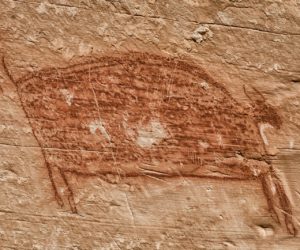A human (also called a human being or person) is a member of the species Homo sapiens, which means ‘wise man’ in Latin. Carolus Linnaeus put humans in the mammalian order of primates. Humans are a type of hominoid, and chimpanzees are their closest living relatives.
Humans are mammals. They are also social animals. They usually live in groups. They help and protect each other. They care for their children. Humans are bipedal, which means they walk on two legs. Humans have a very complex brain, which is much larger than that of the other living apes. They use language, make ideas, and feel emotions. This brain, and the fact that arms are not needed for walking, lets humans use tools. Humans use tools far more than any other species.
There are humans living on every continent. As of 2017, there were over 7.3 billion people living on Earth.
Important features
Humans have a long period of development after birth. Their life depends less on instinct than other animals, and more on learning. Humans are also born with their brains not so well developed as those of other mammals. This makes for an unusually long childhood, and this which makes family life important. There is a good reason for this. If their brains were better developed they would be larger, and this would make birth more difficult. In birth, the baby’s head has to get through the ‘birth canal’, a passageway through the mother’s pelvis.
Many animals use signs and sounds to communicate with each other. But humans have a complex system called language. It allows them to express ideas by using words. Humans are capable of making abstract ideas and communicating them to others. Human language can express things that are not present, or talk about events that are not happening at that time. The things might be elsewhere, and the events may also have occurred at another place or time. No known animals have a system of communication that is as elaborate as human language. By using words to communicate with each other, humans make complex communities with laws, traditions and customs. Humans like to understand the world around them. They try to explain things through myth, science and philosophy. Wanting to understand things has helped many humans make important discoveries.
Humans are the only species living today known to build fires, to cook their food and wear clothes. Humans use more technology than any other animal on Earth ever has. Humans like things that are beautiful and like to make art, literature and music. Humans use education and teaching to pass on skills, ideas and customs to the next generations.
Origins of the humans..
Humans are part of the animal kingdom. They are mammals, which means that they give birth to their young ones, rather than laying eggs like reptiles or birds, and females feed their babies with breast milk. Humans belong to the order of primates. Apes like gorillas and orangutans are also primates. The closest living relatives of humans are the two chimpanzee species: the common chimpanzee and the bonobo. Scientists have examined the genes of humans and chimpanzees, and compared their DNA. The studies showed that 95% to 99% of the DNA of humans and chimpanzees is the same.

Biologists explain the similarity between humans and other hominoids by their descent from a common ancestor. In 2001, a hominid skull was discovered in Chad. The skull is about 7 million years old, and has been classified as Sahelanthropus tchadensis. This skull may show that the date at which humans started to evolve (develop differently) from other primates is 2 million years earlier than scientists had previously thought.
Humans are part of a subfamily called the Homininae (or hominins), inside the hominids or great apes.
Long ago, there used to be other types of hominins on Earth. They were like modern humans, but not the same. Homo sapiens are the only type of hominins who are alive today. The earliest known fossils of genus Homo have been called Homo habilis (handy man). The first fossils of Homo habilis were found in Tanzania. Homo hablilis is thought to have lived about 2.2 to 1.7 million years ago. Another human species thought to be an ancestor of the modern human is Homo erectus. There are other extinct species of Homo known today. Many of them were likely our ‘cousins’, as they developed differently than our ancestors. A theory called the Sahara pump theory has been used to tell how different species of plants and animals moved from Africa to the Middle East, and then elsewhere. Early humans may have moved from Africa to other parts of the world in the same way.
Habitats, settlements and population

In early times, humans usually settled near to water and other natural resources. In modern times if people need things they can transport them from somewhere else. So basing a settlement close to resources is no longer as important as it once was. Since 1800, the number of humans, or population, has increased by six billion. Most humans (61%) live in Asia. The rest live in the Americas (14%), Africa (14%), Europe (11%), and Oceania (0.5%).
Most people live in towns and cities. This number is expected to get higher. In 2005 the United Nations said that by the end of that year, over half the world would be living in cities. This is an important change in human settlement patterns: a century earlier in 1900 only 14% of people lived in cities, in 2000 47% of the world’s population lived in cities. In developed countries, like the United States, 80% of the population live in cities.
Humans have a large effect on the world. Humans are at the top of the food chain and are generally not eaten by any animals. Humans have been described as super predators because of this. Because of industry and other reasons humans are said to be a big cause of global climate change.
Physical appearance
Human body types can be very different from each other. The average height of an adult human is between 5 and 6 1/2 feet. The average weight is between 76 and 83 kg for males and 54–64 kg for females.
Human hair grows on the underarms, the genitals, legs, arms, and on the top of the head in adults of both genders. Hair will usually grow on the face of most adult males, and on the chest and back of many adult males. In human children of both genders, long hair grows only on the top of the head. Although it might look like humans have fewer hairs than most primates, they actually do not. The average human has more hair follicles, where hair grows from, than most chimpanzees have. Human hair can be black, brown, red or blond. Modern humans can also have their hair in many different colors by using dye. When humans get older hair can turn grey or even white.
Human skin colors vary greatly. They can be a very pale pink all the way to dark brown. There is a reason why people in tropical areas have dark skins. The dark pigment (melanin) in the skin protects them against ultraviolet rays in sunlight. The damage caused by UV rays can and does cause skin cancer in some people. Therefore, in more sunny areas, natural selection favors darker skin color. Sun tanning has nothing to do with this issue, because it is just a temporary process which is not inherited. In colder climates the advantage of light-colored skin is that it radiates less heat. Therefore, in less sunny areas, natural selection favors lighter skin color.
Humans are not as strong as other primates of the same size. An average female orangutan is at least three times as strong as an average human man.
The average human male needs 7 to 8 hours sleep a day. People who sleep less than this are generally not as healthy. A child needs more sleep, 9 to 10 hours on average.
The average human baby weighs 3 – 4 kg at birth and is 50–60 cm tall. This is often less in poorer countries. Many babies in poor countries often die early because of this.
Humans have four stages in their lives: childhood, adolescence, adulthood and old age.
Life expectancy is how long you are expected to live for. This depends on many things including where you live. The highest life expectancy is for people from Monaco, 89.52 years. The lowest is for people from Chad where life expectancy is only 49.81 years.
Photo by Kid Circus , TheThrillSociety

